by tmoffett | Jan 10, 2011 | Color, Landscape
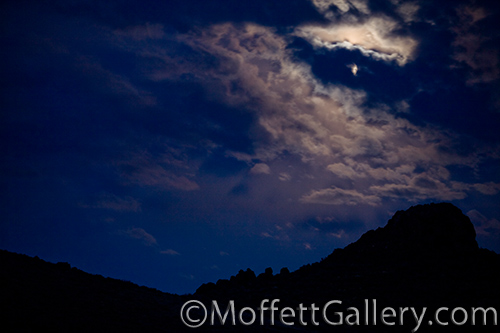
Owyhees with a Full Moon
I love being in the outdoors. A fall night found me out with one of my boys on a scouting trip in the Owyhees when the clouds rolled in and the light from the full moon illuminated them in a mysterious way. I was in awe as I watched the constant change as the clouds moved and covered the moon, then later the sky would open back up and be full of light. I took several exposures of the night sky, some with a silhouetted foreground and others without. This image, to me really shows the feeling of the night. The deep blues and partial cloud cover exudes a feeling of wonder, quite moody. It is what I look for, images that evoke feeling. The subject matter really doesn’t matter if the light is right.
by tmoffett | Jan 3, 2011 | Color, Landscape, Ramblings
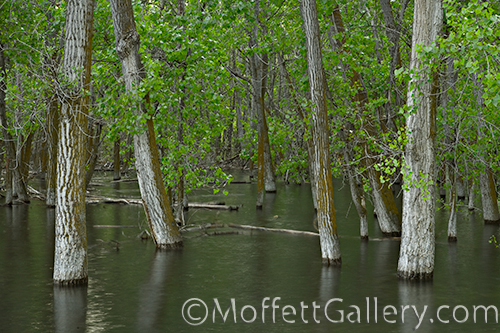
High Water, Lake Lowell
With the new year comes comes new aspirations. I have evaluated the past year and have set new goals for 2011. I love the changes I have made in my career. Teaching and sharing is very rewarding. Writing about photography has been very beneficial to me as an artist. I am beginning to better understand my own work and where I am coming from. I have set new goals for exhibiting my artwork, for creating new images, for hosting workshops and for publishing a book. My first book project is in the works and should be completed within 60 days. It is truly an exciting time for me.
by tmoffett | Dec 30, 2010 | Black and White, Landscape, Ramblings
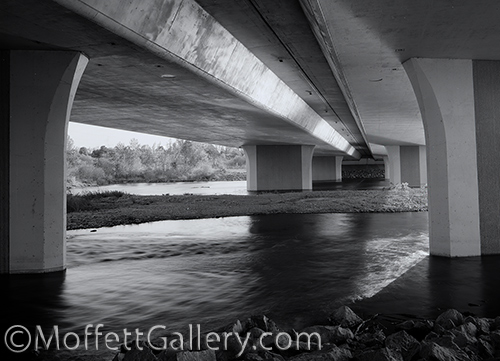
The Connector
I have started many things in my life, some of which have never been completed. This image, taken along the Boise River Greenbelt is part of one of those unfinished projects. I began this project more than 15 years ago, shooting Kodak Tri-X film in my Super Speed Graphic 4×5 camera. I was about 15 images into the series when life took over. I was working at the time as a custom printer in a professional photo lab and at the same time starting up Moffett Photography, a high end portrait studio. I also had 2 young boys and another on the way. Life seemed to get in the way of my personal projects. I put this one on the back-burner, thinking that some day I would get back to it. Years past, I made the switch to digital imaging and I have never got back to this project.
Of all of my unfinished photography projects, this one keeps nagging at me to finish it. I am currently working on three projects, two of which are nearing completion. As I wrap up those two, I am thinking that the Greenbelt series may be back on the table, at least in the exploratory phase. I may even break out the old cameras and continue the project on film. I will be exploring all options.
Stay tuned…
by tmoffett | Dec 28, 2010 | Color, Landscape
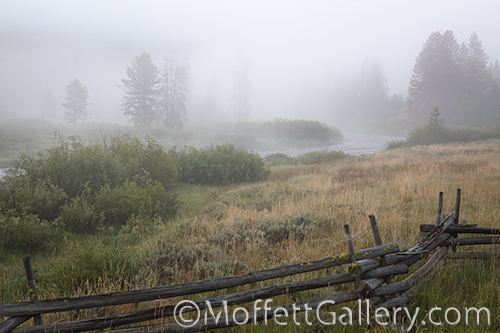
Valley Creek
Why is fog so intriguing? I hate to drive in it. It makes life miserable, yet when it rolls in I am the first one out to photograph it!
On my last trip into the Stanley Basin, before the snow flew, I was treated to for every morning. It was beautiful. I awoke before sunrise and headed from camp toward Stanley Lake. As we descended into the valley, a thick layer of fog met us. The further we went, the thicker it became. Photographing on the fringes was incredible, but as we drove into the thick of it, it became so dense that it was impossible to see anything. This image is just as we hit the edge of it, looking downstream towards Stanley.
The fog creates a depth in a photograph that cannot be obtained any other way. There is also a mysteriousness about an image made in the fog. You cannot see clearly what is in the distance, and at least for me, it leaves me wondering what is hidden in the unseen depths of the photograph. I search and search, unable to make out what is there.
by tmoffett | Dec 23, 2010 | Color, Landscape, Photographic Technique
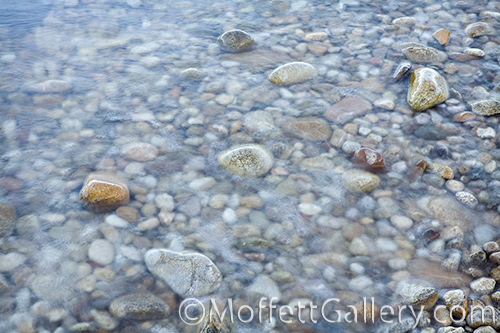
Shoreline, Gotts Point
“How do you capture the motion of water like you do?” That is a question that frequently comes up when I visit with others who are relatively young in the art of photography. It is a question that has a multitude of answers. There is one thing in common with the answers, though. It is all about shutter speed.
The shutter speed is the exposure control that determines how anything in motion is rendered in the final image. If I want to stop the motion, then a very fast shutter speed is necessary, and conversely, if I want to allow the motion to be seen in the still image, a slow shutter speed is needed. How fast or how slow? That is where experience is necessary. It all hinges on how fast the subject is moving and what effect you want portrayed. In the case of this image, with the roughly four inch waves lightly lapping against the rocks near the shore creating bubbles and foam, a .6 second shutter speed was selected so that the bubbles in motion would be evident. Any slower and they would disappear into a blur of motion. Any faster and they appear to be standing still. As is, the lines and streaks are what creates the interest in the image. Take a look at the detail image below.
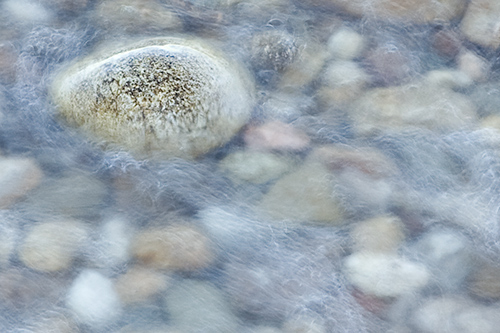
Detail of Shoreline, Gotts Point
Using shutter speed to control motion in photography is something that can only be learned through experience. I have shot thousands of images and analyzed them to get where I am today, and I am still learning and refining my craft. I have learned that motion in a photograph can be used to create mood and feeling. What that mood or feeling is depends on the amount of motion exhibited. The amount of motion shown is completely determined by what shutter speed is selected.
Take control of your image making by taking your camera off of Auto or Program mode, switch to Manual Mode and have fun! Don’t get discouraged by a few mistakes, but analyze them and learn from them. In a short time you will see major improvements in your ability to create more personal meaningful photographs through the use of motion.
by tmoffett | Dec 22, 2010 | Color, Landscape, Ramblings
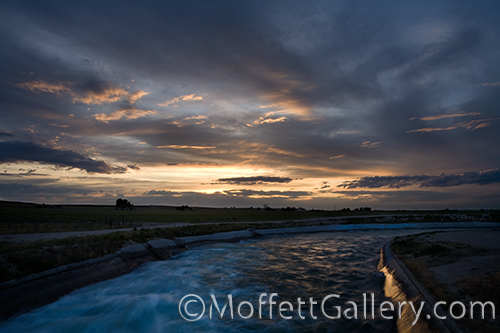
Below the Dam
When looking for locations for portrait photography, I tell my students to find what they like, then turn around and look the other way. Often we miss the best light because we don’t look. I have made a habit of doing this when making landscape photographs as well. Sometimes it pays off.
One evening I was photographing from the lower dam at the lake, looking east as the sun was setting. The warm light skimming the surface of the water and lighting the shoreline on the opposite side of the lake was a wonderful sight. I thought I had what I wanted and began taking down my camera and then heard a voice inside me say, “Turn around!” I did and saw this wonderful sunset. I scrambled to the bottom of the dam and quickly found this spot where I could photograph the irrigation water as it was released into the canal and flowed toward the farmers fields.
Water is the lifeblood in this farming community. Most of my photographs of Lake Lowell are about the quiet beauty of lake and the surrounding area. This one says something more. It speaks of the necessity of the lake to this community. Without it, farmland would dry up. Jobs would be lost. Mouths would go hungry. People would move and the land would become deserted.
I love the lake for its beauty. Others love it for its recreational opportunities. To all of us it is a necessity.









Recent Comments